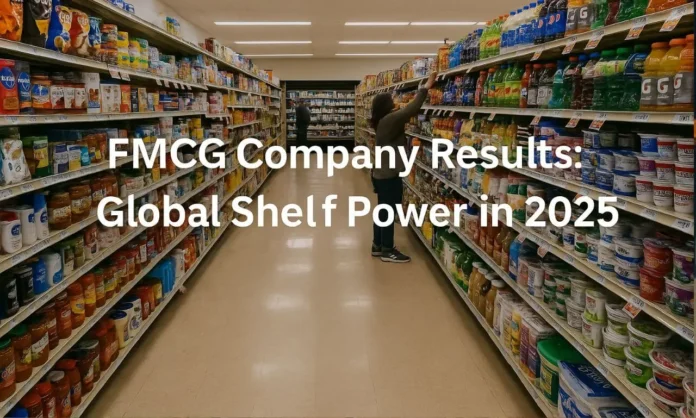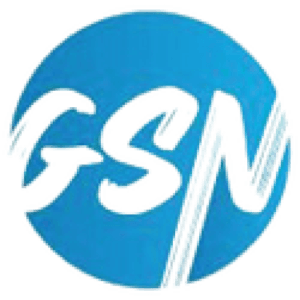The lives of global supermarkets including pricing, packaging, shelf strategy and logistics of the supply chains are influenced by fast-moving consumer goods (FMCG) companies. With economic forces, customers changing their behavior, and digitization creating the 2025 environment, it is company performance that demonstrates how players are changing, innovating, and exceeding the competition. The report explores the recent annual performance of the top FMCG conglomerates, their revenues, strategic changes and the trends characterizing their future activities.
Nestlé: Sustaining Global Leadership

Nestle remains the biggest FMCG company globally in terms of revenues. In 2025, it has increased its annual sales to CHF 91.35 billion (approx. \$100 billion USD) and has an organic growth of 2.2 percent because of its strategic pricing and persistent innovation in the categories of wellness, functional foods and plant-based.
The core brands of the company, Nescaf, Purina, KitKat and Gerber kept their leading position and the new investments into the eco-friendly packaging and regional production centers stabilized the prices in the fluctuating markets. The forces behind the performance covered growth in Latin America, Asia as well as pet care even though mature markets were experiencing slowdowns.
PepsiCo: Balanced Growth Between Snacks and Beverages

In 2025, the 2025 revenues of PepsiCo increased to \$91 billion, an increase of \$86 billion in 2024 due to a stable performance in both the snacks and beverages segments. Lay, Gatorade and Quaker remained category leadership and new launches of low-sugar drinks and protein based snacks fitted the health trend of consumers.
Digital transformation has led to an improvement in the amount of e-commerce sales, which has grown at a yearly rate of 25 percent. The \$400 million that PepsiCo has invested in sustainable agriculture and circular packaging is also doing it some good in terms of long-tern positioning in value sensitive markets.
Procter & Gamble (P\&G): Innovation Anchors Growth

The total revenue reported by P\&G during one year in 2025 reached \$82 billion, indicating the further power of personal care and home hygiene, as well as grooming. Established brands such as Tide, Pampers, Gillette and Head & shoulders managed to maintain international market.
Digitization of business and product premiumization provided margin enhancement. More than \$1.5 billion was spent at the company in R& D, including relying on clean-label innovation and resilient supply chain. The major growth areas were Asia-Pacific and North America.
Unilever: Resilience Through Local Strategy

Unilever has a revenue of \$60 billion, an increase of a modest pace in the developing regions with its products of personal care as well as home care. Brand performance was topped by Dove, Knorr and Lifebuoy.
In Asia and Africa, Unilever focused on local sourcing and in-country marketing, which boosted the volume by 8.5 percent. The spend in the digital space hit \$1 billion, centering on the speeding up of the e-commerce. Sourcing in lines of sustainability in both tea and palm oil also went on increasing.
Coca-Cola: Reinventing the Beverage Playbook
In 2025, the Coca-Cola revenue increased to \$46 billion. The company took the leading position as a non-alcoholic beverage maker, which was dominated by Coca-Cola Zero Sugar, Fanta, and Dasani. More than 35 per cent of the world selling beverages were of the healthier drink variety.
By increasing the pace of achieving its sustainability packaging ambitions by 2030 and progressing on digital vending and D2C (direct-to-consumer) pilots in urban markets, Coca-Cola achieved the progress made in compliance with the goals of the Paris Agreement.
L’Oréal: Beauty Tech Meets Consumer Loyalty
LOr didn t end the year with \$44 billion in terms of revenue, which is a 8 percent increase YoY. The portfolio was topped by skincare and cosmetic products, where Garnier, Maybelline and La Roche-Posay registered profitability in Europe and Asia.
The DTC model of the company increased by 35 % with the help of recommendation engines AI, and personalization strategies provided. L.Or.Eal invested more than \$1billion into sustainability and the inclusive beauty innovation as well.
Johnson & Johnson: Consumer Health Stability
As historically seen as a medical giant, Johnson and Johnson continued to shine on the consumer goods front in 2025. The personal care and OTC lines like Neutrogena, Listerine and Tylenol have \$85 billion revenue.
Real growth was supported by health-oriented advertising and entry into new markets as well as the after-pandemic increased demand in immune support products.
JBS and Tyson Foods: FMCG Protein Giants
The leaders of the protein FMCG industry are JBS (72 billion) and Tyson foods (53 billion). These two companies also increased their producing of premium meat, plant-protein hybrids, as well as sustainable sourcing practices.
JBS was the leader in the international sale, Tyson strengthened its U.S. retailing relationship and introduced new products of ready to cook type.
Mondelez International: Snacking for Growth
Mondelez generated \$28 billion in 2025, with strong demand for Oreo, BelVita, and Cadbury. The company invested in gluten-free and portion-controlled SKUs, targeting health-conscious buyers.
Online sales increased 25%, supported by dynamic pricing and influencer-driven campaigns. Emerging market growth and portfolio innovation strengthened the overall outlook.
Danone: Wellness-Driven Dairy Expansion
Danone posted \$28 billion in annual revenue. Growth came from Activia, Alpro, and Evian, especially in plant-based and high-protein dairy. Sustainability reporting and local partnerships helped reinforce consumer trust.
Digital tools improved inventory tracking and reduced waste, contributing to operational efficiency across Europe and Latin America.
Kimberly-Clark: Innovation in Hygiene
Kimberly-Clark earned \$20 billion in 2025, with steady sales in personal care and hygiene. Huggies and Kotex remained central, supported by eco-focused product launches and real-time consumer insights.
The company’s hybrid model (retail plus DTC) helped it reach more consumers in Southeast Asia and Latin America.
General Mills: Legacy Meets Wellness
With \$19 billion in revenue, General Mills leaned into health-based reformulations across Cheerios, Nature Valley, and Progresso. New gluten-free, low-sugar products led to strong retail acceptance.
Its e-commerce arm saw significant growth, while overseas expansion in Latin America supported volumes amid U.S. price pressure.
Colgate-Palmolive: Sustainability-First Innovation
Colgate-Palmolive posted \$18 billion in sales. Oral care dominated, especially in emerging markets. The company prioritized digital campaigns, refillable packaging, and supply chain transparency.
Its \$700 million annual marketing spend boosted brand recall and loyalty, particularly in eco-conscious segments.
Reckitt: Health and Hygiene as Growth Engines
Reckitt closed at \$15 billion in revenue, with Dettol, Lysol, and Durex driving momentum. Demand for disinfectants remained strong, particularly in high-density urban markets.
R\&D and sustainability were prioritized, as the company committed \$500 million to next-gen health products. Reckitt also deepened partnerships with online retailers and healthcare platforms.
Private Label- A Strategic Weapon
The option of the low price label is not the only option of the labeling anymore. It has become a coherent brand strategy. In the U.S., APAC and EU, there is increased growth in the promotion of private label in the fresh foods, household, skincare and baby nutrition.
Functional formulation and SKUs are premiums that are boosting conversions in shoppers. The retailers are spending in quality formulations, data driven pricing, and online communications.
Technology, E-Commerce and supply chain optimization
Inventory, speed-to-shelf and price control are reinvented in FMCG companies by AI-powered forecasts, cross-channel logistics, and robotics.
By 2025, the leading companies will be those that combine real-time analytics with predictive planning- minimize wastage, prevent sitting around, and on-shelf availability. The technology stack has become an operation spine.
Sustainability: The Margin to Marketing
Being eco-friendly is no longer a catchphrase. Top FMCG brands have gone towards measurable and scalable sustainability initiatives.
ESG can be found across product P&Ls with sustainability sourcing (local, low emission logistics and SMEs), bioplegic business models (biodegradable packaging and plant-based ingredients) and new investment focus areas (ESG-strategies in portfolio companies). The brands achieving the best in transparency are winning in trust.
The Future: 2026 and Beyond
The 2025 performance proves that scale is no longer sufficient in ensuring growth. The ability to be agile, digitally strong, and at the same time relevant to this generation of consumers is what keeps them resilient.
With localized demand knowledge, simplified formats, less wastage, and omnichannel ecosystems, FMCG firms will be in the best position to perform. Consumer economies around the world are changing – but FMCG is one solid pillar of stability, strategy and day-to-day relevance in the supermarket retail business.



